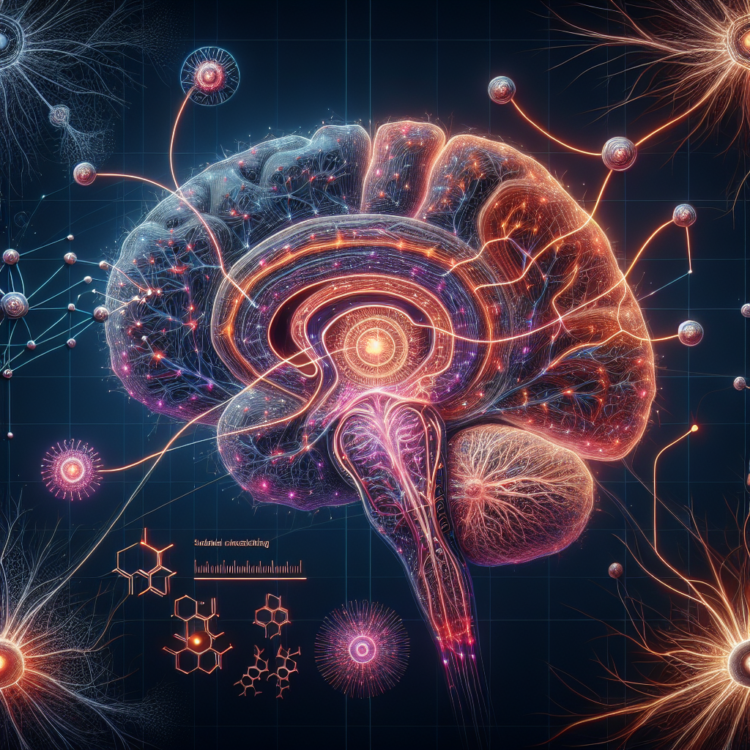A previously unknown mechanism by which proteins from the brain are carried to a particular group of sensory nerves causes migraine attacks, a new study shows. This may pave the way for new treatments for migraine and other types of headaches.
A previously unknown mechanism by which proteins from the brain are carried to a particular group of sensory nerves causes migraine attacks, a new study shows. This may pave the way for new treatments for migraine and other types of headaches.
More than 800,000 Danes suffer from migraines – a condition characterised by severe headache in one side of the head. In around a fourth of all migraine patients, headache attacks are preceded by aura – symptoms from the brain such as temporary visual or sensory disturbances preceding the migraine attack by 5-60 minutes.
While we know with some certainty why patients experience aura, it has been a bit of a mystery why they get headaches, and why migraines are one-sided.
Till now. A new study in mice conducted by researchers at the University of Copenhagen, Rigshospitalet and Bispebjerg Hospital is the first to demonstrate that proteins released from the brain during migraine with aura are carried with cerebrospinal fluid to the pain-signalling nerves responsible for headaches.
“We have discovered that these proteins activate a group of sensory nerve cell bodies at the base of the skull, the so-called trigeminal ganglion, which can be described as a gateway to the peripheral sensory nervous system of the skull,” says Postdoc Martin Kaag Rasmussen from the Center for Translational Neuromedicine at the University of Copenhagen, who is first author of the study.
At the root of the trigeminal ganglion, the barrier that usually prevents substances from entering the peripheral nerves is missing, and this enables substances in the cerebrospinal fluid to enter and activate pain-signalling sensory nerves, resulting in headaches.
“Our results suggest that we have identified the primary channel of communication between the brain and the peripheral sensory nervous system. It is a previously unknown signalling pathway important for the development of migraine headache, and it might be associated with other headache diseases too,” says Professor Maiken Nedergaard, who is senior author of the study.
The peripheral nervous system consists of all the nerve fibres responsible for communication between the central nervous system – the brain and spinal cord – and the skin, organs and muscles. The sensory nervous system, which is part of the peripheral nervous system, is responsible for communicating information about e.g. touch, itching and pain to the brain.
The study results offer insight into why migraine is usually one-sided, which has been a mystery to scientists.
“Most patients experience one-sided headaches, and this signalling pathway can help explain why. Our study of how proteins from the brain are transported shows that the substances are not carried to the entire intracranial space, but primarily to the sensory system in the same side, which is what causes one-sided headaches,” says Martin Kaag Rasmussen.
The study was conducted on mice, but also included MR scans of the human trigeminal ganglion, and according to the scientists, there is every indication that the function of the signalling pathway is the same in mice and humans and that in humans too the proteins are carried by cerebrospinal fluid.
Proteins may lead to new treatment options
Using state-of-the-art techniques such as mass spectrometry, which can detect a broad selection of proteins in a given sample, the researchers analysed the cocktail of substances released during the aura stage of a migraine attack – that is, during the stage of visual disturbances.
“The concentration of 11 per cent of the 1,425 proteins we identified in the cerebrospinal fluid changed during migraine attacks. Of these, 12 proteins that had increased in concentration acted as transmitter substances capable of activating sensory nerves,” says Martin Kaag Rasmussen and adds:
“This means that when the proteins are released, they are carried to the trigeminal ganglion via the said signalling pathways, where they bind to a receptor of a pain-signalling sensory nerve, activating the nerve and triggering the migraine attack succeeding the aura symptoms.”
The group of proteins identified by the researchers included CGRP – a protein already associated with migraine and used in existing treatments. However, the researchers also discovered a series of other proteins, which may pave the way for new treatment options.
“We hope the proteins we identified – aside from CGRP – may be used in the design of new preventive treatments for patients that don’t respond to available CGRP antagonists. The next step for us is to identify the protein with the greatest potential,” says Martin Kaag Rasmussen.
He explains that one of the proteins identified is known to play a role in menstrual migraine.
“Initially, we hope to identify the proteins that trigger migraine phenotypes. We will then proceed to do provocation tests on humans in order to determine whether exposure to one of the identified proteins can trigger a migraine attack,” says Martin Kaag Rasmussen and adds:
“It is a good idea to test whether this and other proteins can trigger migraine attacks in humans, because if they can, they may be used as targets in treatment and prevention.”
Journal
Science
Article Title
Trigeminal ganglion neurons are directly activated by influx of CSF solutes in a migraine model
Article Publication Date
4-Jul-2024




